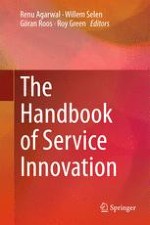2015 | OriginalPaper | Chapter
Services Innovation in a Circular Economy
Authors : Göran Roos, Renu Agarwal
Published in: The Handbook of Service Innovation
Publisher: Springer London
Activate our intelligent search to find suitable subject content or patents.
Select sections of text to find matching patents with Artificial Intelligence. powered by
Select sections of text to find additional relevant content using AI-assisted search. powered by
